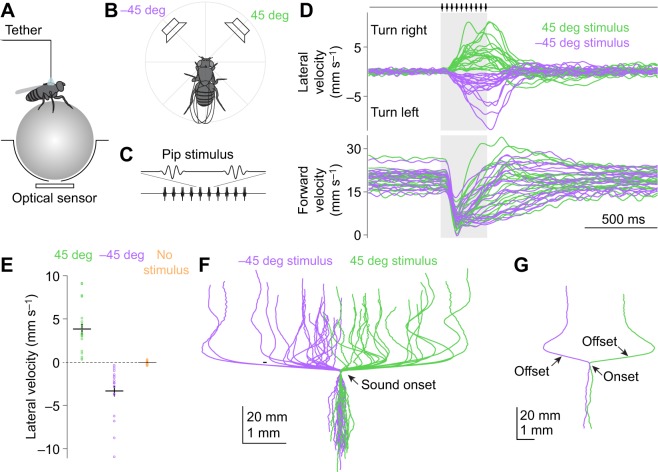Fig. 2.
Lateralized sounds elicit phonotaxis as well as acoustic startle. (A) A female fly is tethered to a pin and positioned on a spherical treadmill. An optical sensor monitors the forward and lateral velocity of the treadmill; these values are inverted to obtain the fly's fictive velocity. (B) Sound stimuli are delivered from speakers placed at different azimuthal angles. In a given trial, speakers are activated individually (not together). (C) A sound stimulus similar to the pulse component of D. melanogaster courtship song. It consists of 10 pips with a carrier frequency of 225 Hz and an inter-pip interval of 34 ms (total duration 322 ms). (D) Lateral and forward velocity over time. Each trace shows data for one fly averaged across trials (n=19 flies). Flies transiently decrease their forward velocity (‘acoustic startle’; Lehnert et al., 2013) and then turn toward the sound source. (E) Lateral velocity (measured at stimulus offset) is significantly different when the speakers are positioned at 45 deg versus −45 deg (P=8×10−6, t-test). Each dot is one fly, averaged across trials. Lines are means±s.e.m. across flies. (F) Trial-averaged paths (x and y displacements), one per fly. (G) Two paths from F, with sound offset indicated. These examples show how some flies make compensatory turns shortly after sound offset.

